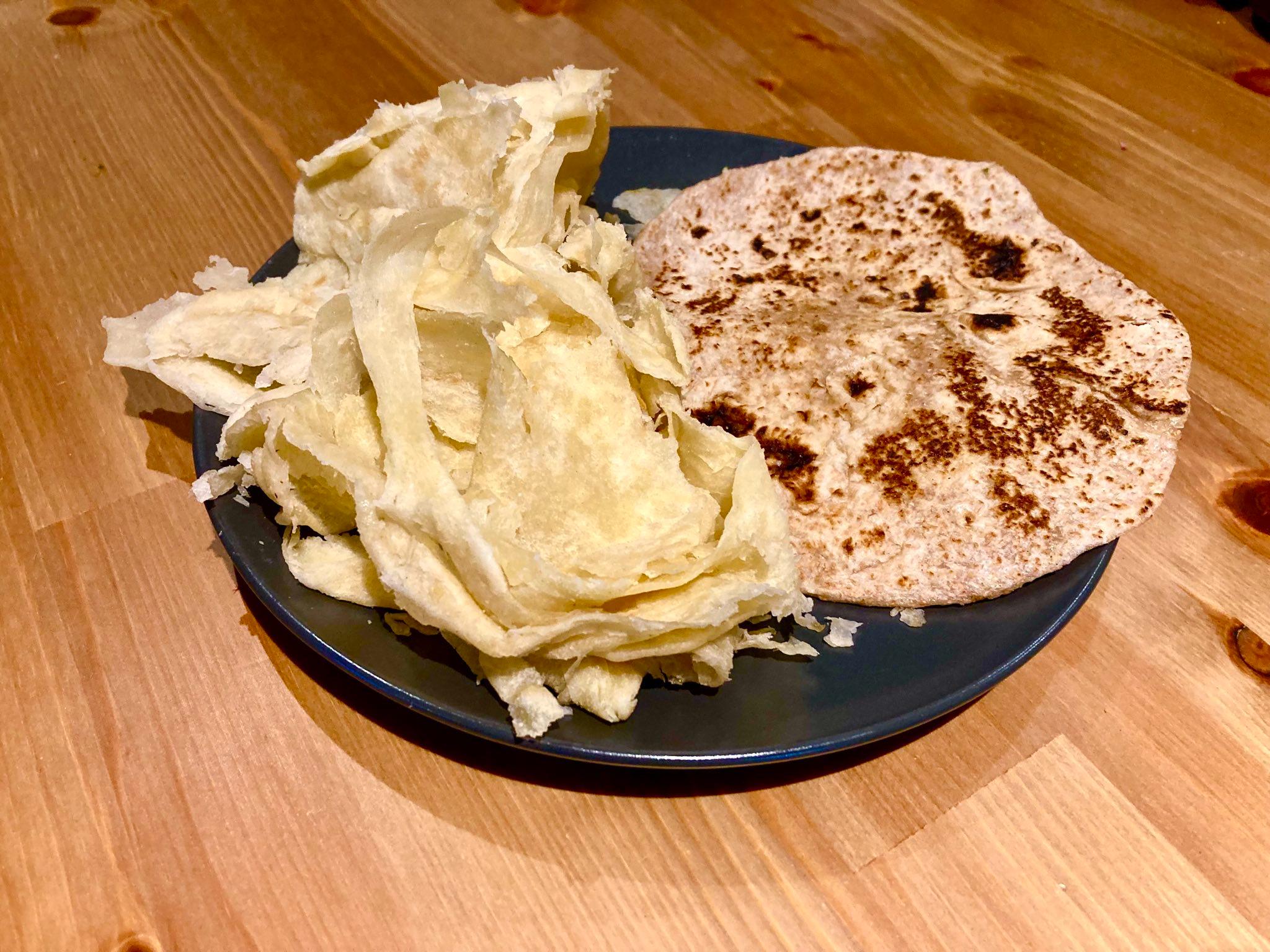

Roti is one of the simplest flat breads you can make; being unleavened means less wait time to actually make it, and is the perfect food item for dips, sauces, stews, and curries! There are many styles of roti: Plain roti, Whole wheat roti, Sada roti, Buss up Shut roti and dosti roti to name a few. The image below are examples of buss up shut roti and whole wheat roti.

You will need a pan - ideally cast iron or carbon steel, but a large skillet will work. Traditionally you would use a Tawa, so if you have one great, if not no worries. As well as a bowl for mixing, rolling pin, and a butter knife or utensil to flip the roti.
You will need extra oil, butter, ghee for brushing over the rotis. This keeps them soft, and prevents them from drying out.
This roti recipe make about 2-4 rotis, but that depends on the size of roti desired.
In a large bowl,
Heat the skillet to medium to medium-high heat, depending on the type of skillet.
Do not rely on the time, but appearance of the roti. Ensure that it cooks as desired before flipping. You want some of those brown before slightly burnt spots.
You should see the roti puff in spots on the 2nd and 3rd flip. It is ideal if the roti puffs into 1 ball shape, this has to do with kneading, and rolling. If you have a gas stove you can put the roti near of the pan close to the burner and it should puff up completely, but not necessary
fin.
Same as Plain / Whole wheat roti, but you add 1 tsp of Baking powder per cup of flour. The difference here is the roti will be thick and dense, like a naan. This recipe makes 1-2, if using the above ratios.
fin.
This is used for special occasions and is a soft roti with many layers that looks like a “busted up shirt” (Buss up shut!). It can be made by adding a leavening agent to the flour like a Sada roti but the preparation different. This recipe makes 1-2 rotis depending on the size of your pan, for a standard 10-12” skillet make 2 rotis.
This part is where having two people may help, or just don’t rush. As after you cook the roti, you need to damage it. Traditionally you beat it with sticks, but your neighbours may find that odd if you live in a urban area outside of the caribbean.
Some people clap the rotis, or within a cloth clap it hard to separate the layers. I found a way to not burn your hands. I use a large plastic tupperware container, folding the roti and shaking very vigoursly.
fin.
© 2017–2024 David Kalliecharan